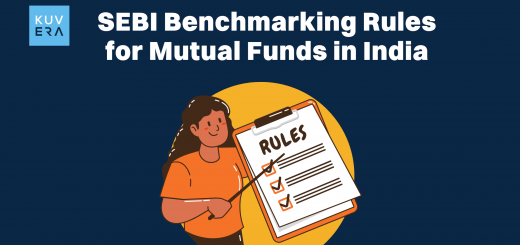Karunesh Dev is a former banking professional turned writer and personal finance educator. He offers coaching, financial literacy advisory and a blog on investing wisely and building wealth. He blogs at Investment Diaries with the aim of making people ‘financially literate’ so that they can make smart and intelligent choices. You can reach him here.
What is Fund Overlap?
When a portfolio comprises of multiple equity mutual fund schemes which have similar objectives and benchmarks, it would have many of the same securities. This is an overlap. This happens when most of your mutual funds are investing over and over again in similar stocks within the same or different categories.
The basic idea behind diversification is to invest in different assets so as to decrease the risk associated with a particular asset. If all or most of your funds are buying into the same securities or companies, your purpose of diversification and return maximisation is defeated.
Checking for Fund Overlap
1/ Go through your Mutual Fund portfolios – check the composition of securities in a particular Mutual Fund against the benchmark and peers. Reading through a portfolio is not difficult.
A very simple and effective way is to check the top 5-10 holdings and their weight. For example, if two funds from your portfolio have HDFC Bank, RIL, TCS, Infosys and ICICI bank as top holdings with about the same holding percentage, it makes sense to look for a different fund. (This is just an example and no recommendation)
2/ Look for exposure to a specific sector – for example banking, IT, FMCG, Automobiles etc. If you think two or more funds in your portfolio have an overexposure and in a similarly high proportion, it would be better to look for another fund or assess the risk basis your outlook and return expectation.
3/ Check for the Fund Manager’s style and affinity for a few companies/sectors which might appear repeatedly in all the funds being managed by him/her. There might be a huge overlap in a large cap & multi-cap or a focussed fund being managed by this manager.
4/ The extent of overlap can be checked by using a statistical tool called R-squared. It measures an investment’s correlation against its benchmark.
As per Investopedia,
“R-squared values range from 0 to 1 and are commonly stated as percentages from 0% to 100%. An R-squared of 100% means that all movements of a security (or another dependent variable) are completely explained by movements in the index (or the independent variable(s) you are interested in).
In investing, a high R-squared, between 85% and 100%, indicates the stock or fund’s performance moves relatively in line with the index. A fund with a low R-squared, at 70% or less, indicates the security does not generally follow the movements of the index.”
The index is the benchmark, like Nifty 50, S&P BSE 100 and Nifty Midcap 100 with a base value of 100. Suppose a mutual fund benchmarked against Nifty 50 has R-Squared of 97. This means that the fund is almost a replica of its benchmark and thus imitates the benchmark’s movements.
Why is a high overlap not beneficial?
While some overlap would always be there and is desirable, holding 2-3 similar funds with a high R- squared would not help. High overlap exposes your portfolio to a sector or a company-specific risk. It limits the portfolio returns when compared with the benchmark.
The very purpose of investing in actively managed funds is to beat the benchmark returns.
Conclusion
Investing in too many mutual fund categories or across Fund Houses (AMCs) does not necessarily mean that you are diversifying. It does not ensure superlative returns.
An ideal portfolio should not have more than 5-6 funds with a mix of different categories and/or Fund Houses-one fund from the large-cap space, one from mid-cap, one from small-cap and one from the multi-cap space is all that you need. ELSS should be part of the portfolio from a tax saving perspective.
Fund overlap is only one of the several factors that you should look into. A better understanding can be developed once you start investing and then by monitoring your portfolio periodically.
Kuvera: we recommend a 5 fund portfolio with little or no fund overlap. You can check it here.
Start investing through a platform that brings goal planning and investing to your fingertips. Visit kuvera.in to discover Direct Plans and start investing today.
#MutualFundSahiHai, #KuveraSabseSahiHai!











Indrani Bhattacharjee
June 1, 2019 AT 15:55
The correlation and overlap of similar mutual fund and its impact on portfolio has been explained near perfectly and in a simplistic manner .. An example of where two mutual funds overlap would have been a great addition ??
Gaurav Rastogi
June 3, 2019 AT 01:21
Thanks for the feedback Indrani. – Gaurav
Yogesh
June 3, 2019 AT 17:56
Given enough time, money and computing power can predict good R square value. However when do I need to go with an optimal r square is always a challenge. As there is always a fear of overfitting and under Fitting.it is also to be noted that models to generate r square are adjusted to suit specific set of historical conditions. As factors keep on changing,going with a true representative data sample has never been addressed or may be its near to impossible. As legendary investor Paul Tudo said, if there was a single easy formula to follow, then all investors would already be rich.
Gaurav Rastogi
June 6, 2019 AT 00:46
This is true Yogesh. And very well said. So then there are two alternatives –
1. If you want active funds, select based on past R2 but then overlay it with your understanding of PM style and the likelihood of overlap happening in the future as the other option to rebalance based on overlap periodically is expensive (taxes).
2. Select Index funds which have low overlap in securities as well as high R2.
Dhiraj Aswani
June 4, 2019 AT 12:39
Good read, got to learn about overlap. Thanks for sharing knowledge.
Dhiraj Aswani
June 4, 2019 AT 13:16
Good article. Learned overlap concept. Thanks for sharing knowledge.
Jaswinder Singh
June 5, 2019 AT 05:13
Very well explained in simple language…The article tells us the importance of having diversified investment rather than investing in same sector through different funds….
Gaurav Rastogi
June 6, 2019 AT 00:38
Thanks Jaswinder.
Rahul Verma
June 6, 2019 AT 17:05
Very nice captured all the information related to overlap as Indian still people are scared to invest only the urban population is focusing on mutual funds.
Saurabh
June 9, 2019 AT 11:49
Never looked at this aspect while choosing a basket of MFs. An eye opener indeed. Will keep a tab on Fund overlap. Thanks !
Vipin
June 9, 2019 AT 11:59
Good Article Karunesh!! Informative and simple language..
Deepak Pokhriyal
June 11, 2019 AT 08:07
Good article!! My take is too much diversification reduces your return potential as well. For a know nothing investor best diversification is investing in index itself through ETFs.
Sargam
June 20, 2019 AT 14:59
These are excellent tips to manage wealth and create more wealth. I have always consulted Karunesh before investing my money. This article explains so many factors in such a simple manner … its great. Looking forward to reading more blogs by you.
Kartheek
August 29, 2019 AT 02:26
I am requesting Kuvera to add a section where we can find % Fund Overlap & all the stock holdings of the funds in kuvera, so that I will be useful all the kuverians…Please consider this request
Gaurav Rastogi
September 2, 2019 AT 04:10
We will take this into consideration.
JayR
September 18, 2019 AT 14:54
+1 request for r2 feature in kuvera.
+1 request for the example with MF having lower and upper R2 values and comparison on past data
Gaurav Rastogi
September 19, 2019 AT 01:41
Thanks, Jay, we will consider adding it.